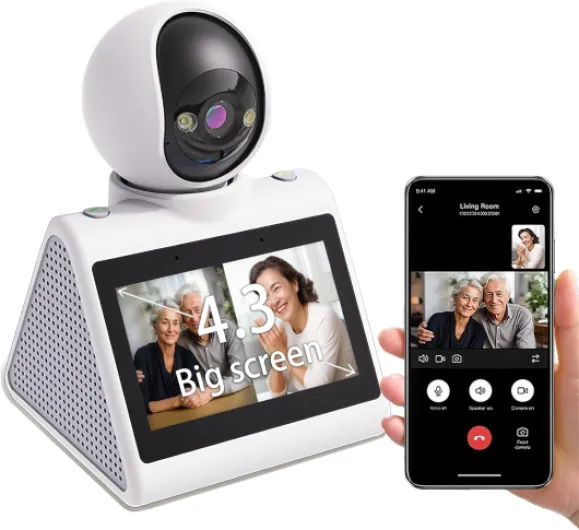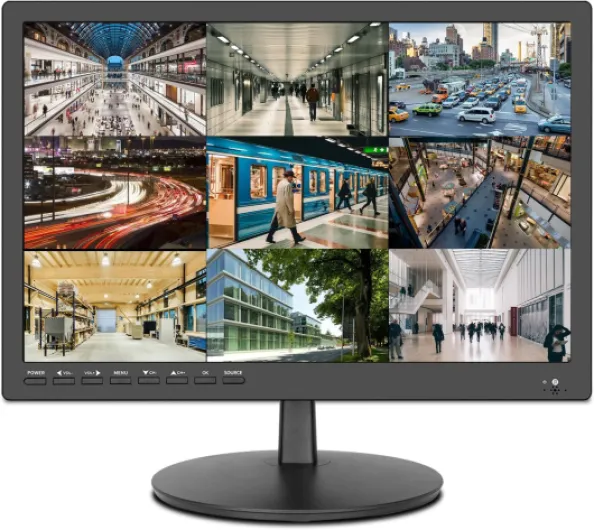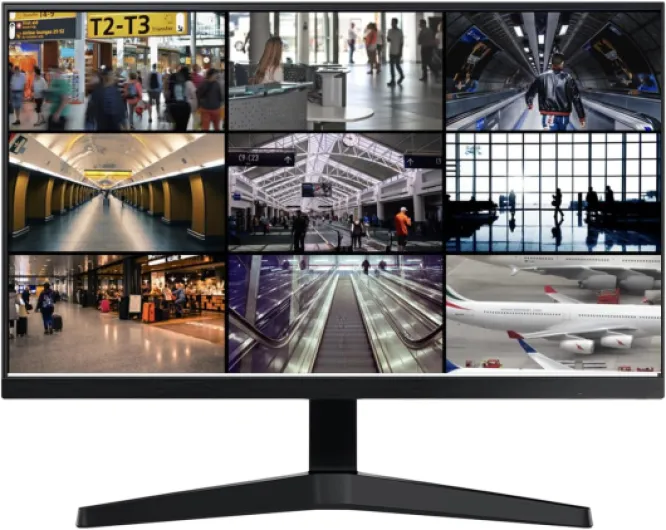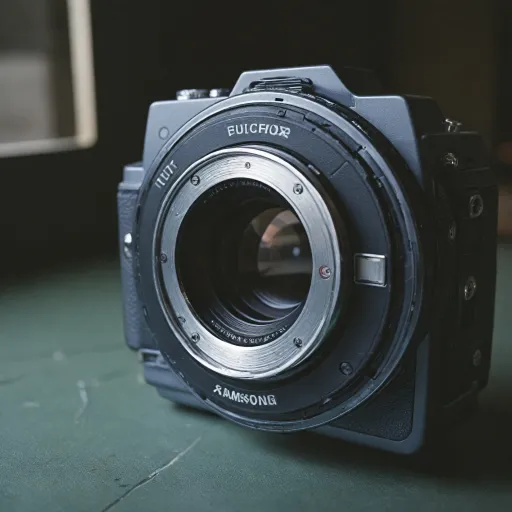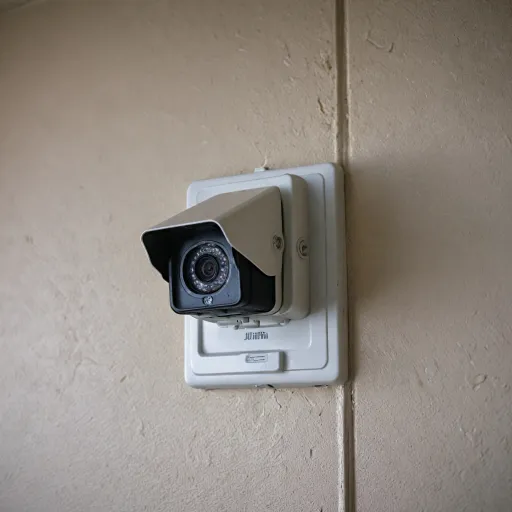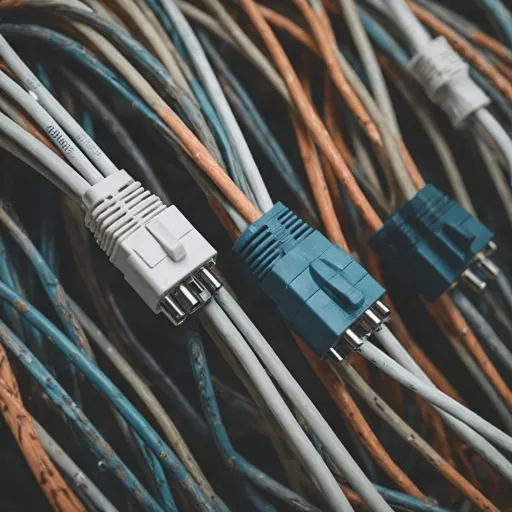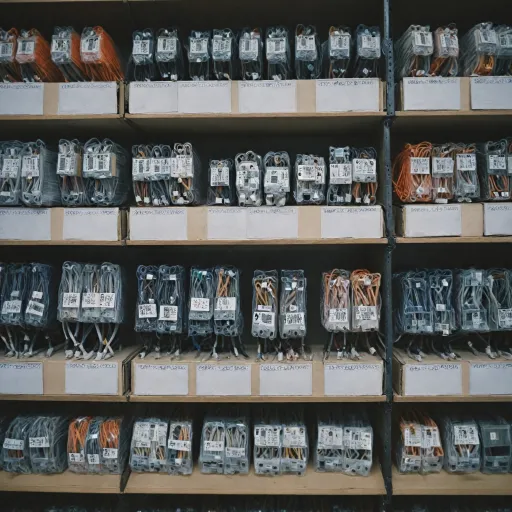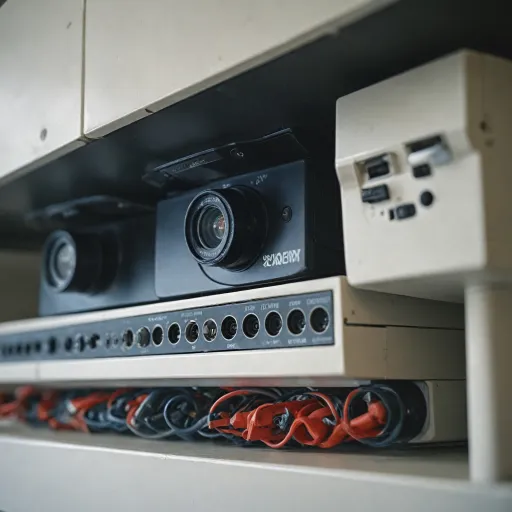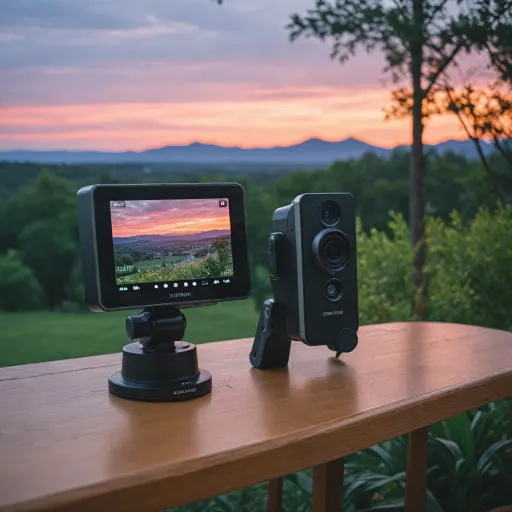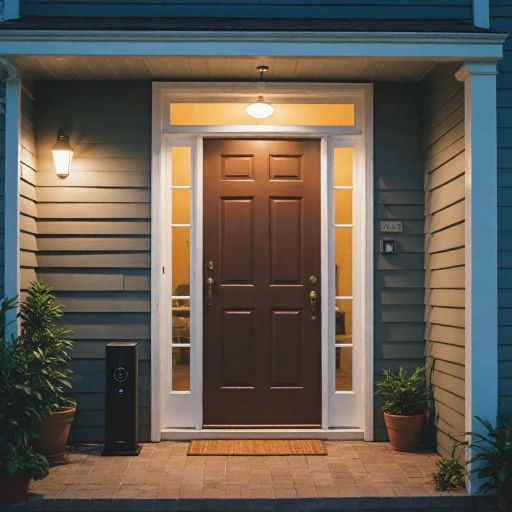
Understanding the role of a security camera screen
Why a Dedicated Display Matters for Your Ring Camera
When setting up a Ring camera system, many people focus on the camera itself and the app, but the role of a dedicated security monitor is just as important. A reliable camera display allows you to view live video feeds, monitor activity in real time, and respond quickly to security events. This is especially crucial for small business owners and homeowners who want to keep an eye on multiple areas at once.
Unlike checking footage on a phone or tablet, a dedicated security monitor or CCTV monitor offers a larger, clearer video display. This makes it easier to spot details and manage several security cameras at the same time. Whether you use a wireless security camera or a wired CCTV camera system, having a proper display can enhance your overall surveillance experience.
- Real-time monitoring: Instantly see what's happening without unlocking your phone or waiting for notifications.
- Centralized control: Manage multiple camera systems from one screen, including PTZ cameras and ndaa compliant devices.
- Better visibility: Larger screens, such as 10 inch or 15 inch monitors, provide more detail than mobile devices.
- Professional setup: A dedicated security monitor with built speakers and HDMI or VGA input can be integrated into existing CCTV security systems for a seamless experience.
Choosing the right camera monitor involves understanding compatibility with your Ring camera, the types of monitors available, and the features that matter most for your security needs. For a deeper dive into how Ring cameras work within modern surveillance systems, check out this guide to Ring camera functionality.
Types of screens compatible with Ring cameras
Popular Display Options for Ring Camera Systems
When setting up a Ring camera system, choosing the right display or monitor is crucial for effective video surveillance. Not all screens are created equal, and compatibility with Ring cameras can vary. Here’s a breakdown of the main types of screens you might consider for your security setup:
- Smart Displays and Tablets: Devices like Amazon Echo Show or Fire Tablets can stream live video from Ring cameras. These are user-friendly and integrate well with the Ring ecosystem, making them a popular choice for home and small business security.
- Dedicated Security Monitors: These monitors are designed for continuous video surveillance. They often feature HDMI, VGA, or BNC inputs, making them suitable for more advanced camera systems. Some models come with built-in speakers for audio monitoring and are available in various inch sizes to fit your space.
- Computer Monitors: Standard monitors with HDMI or VGA input can be used to display Ring camera feeds via a connected computer or compatible device. This is a flexible option for those who want to integrate their security camera display with other systems.
- TVs with Smart Capabilities: Many smart TVs can display Ring camera feeds using built-in apps or casting features. This is convenient for users who want to monitor security cameras on a larger screen.
- Wireless Security Monitors: These monitors connect to your camera system wirelessly, reducing cable clutter and offering more flexibility in placement. They are ideal for setups where running cables is difficult.
- Raspberry Pi Displays: For tech-savvy users, a Raspberry Pi with a compatible display can be configured to show Ring camera feeds. This is a customizable and cost-effective solution for DIY enthusiasts.
Compatibility and Connection Considerations
When selecting a monitor for your Ring camera system, check the available input options such as HDMI, VGA, or BNC. Most Ring cameras connect via Wi-Fi and display video through the Ring app, so ensure your chosen display can access the app or be connected to a device that can. For those interested in advanced features like PTZ (pan-tilt-zoom) camera support or NDAA compliant equipment, dedicated CCTV monitors or security monitors might be necessary.
For a deeper dive into how the Ring app works with different displays and monitors, you can explore this guide on exploring the features of the Ring app.
Choosing the Right Screen for Your Needs
The best display for your Ring camera system depends on your security goals, the number of cameras, and your preferred setup. Whether you need a single camera monitor for a small business or a multi-screen CCTV system for comprehensive surveillance, understanding your options helps you build a reliable video surveillance system.
Key features to look for in a security camera screen
Essential qualities for a reliable camera display
When selecting a security monitor for your Ring camera system, it’s important to focus on features that directly impact your video surveillance experience. The right camera display can make monitoring easier, whether you’re managing a small business or keeping an eye on your home. Here are some key aspects to consider:
- Screen size and resolution: Look for a monitor with a size that fits your space and needs. Common sizes range from 10 to 24 inch displays. Higher resolution, such as Full HD or 4K, ensures you see clear video details from your security cameras.
- Input compatibility: Check that the monitor supports HDMI, VGA, or BNC inputs, depending on your camera system. Many Ring setups use HDMI, but some cctv camera systems or legacy cctv monitors may require BNC or VGA. If you’re integrating with a Raspberry Pi or similar device, HDMI is typically preferred.
- Built-in speakers: Monitors with built speakers allow you to hear audio from your camera system, which is useful for two-way talk features or listening to alerts from your security cameras.
- Wireless options: Wireless security monitors can reduce cable clutter and offer more flexible placement, especially in larger surveillance systems.
- PTZ support: If you use PTZ cameras (pan-tilt-zoom), make sure your display or camera monitor supports PTZ controls, either through on-screen menus or compatible remote systems.
- Durability and build quality: For environments like small businesses or outdoor setups, choose a security monitor with a sturdy build, especially if it will run continuously as part of your cctv security system.
- Multi-camera viewing: Some security monitors and cctv monitors allow you to view multiple camera feeds at once, which is essential for comprehensive video surveillance.
- NDAA compliance: For certain organizations, using NDAA compliant equipment is a requirement. While this is more relevant for government or regulated industries, it’s worth checking if your camera display or system needs to meet these standards.
Power and connectivity considerations
Don’t overlook the importance of power supply and connectivity. Monitors with flexible power options can be easier to integrate into existing camera systems. For more details on powering your security camera display, check out this guide on security camera power supply.
Additional features for enhanced surveillance
- Adjustable stands and mounting: Look for monitors with adjustable stands or VESA mounting options for better placement in your surveillance setup.
- Low-latency video display: Fast response times are crucial for real-time monitoring, especially in active security environments.
- Energy efficiency: Energy-saving features can help reduce operating costs, especially if your camera monitor is running 24/7.
Choosing the right security monitor or camera display ensures your Ring camera system delivers clear, reliable video surveillance. Focus on features that match your environment and security needs for the best results.
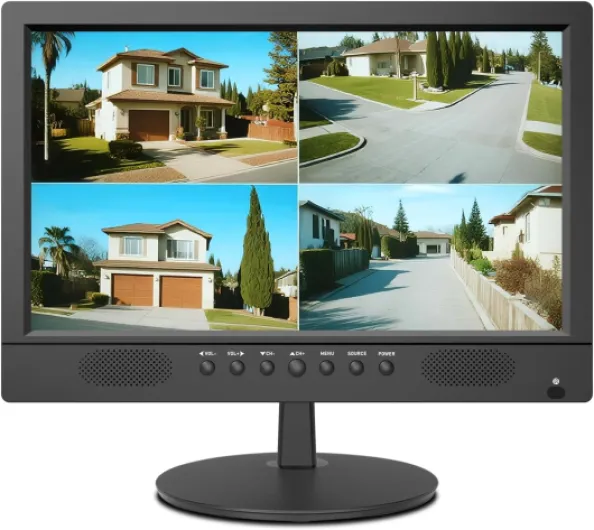
- + Versatile Inputs: Supports AV, HDMI, VGA, and BNC
- + Easy Installation: Wall-mounted design
- + Built-in Speaker: Convenient audio output
- + Remote Control: Easy operation
- + USB Playback: Full format video support
Setting up your security camera screen with Ring
Connecting Your Screen to the Ring Camera System
Once you have selected a compatible security monitor or display for your Ring camera setup, the next step is to connect everything properly. Most Ring cameras are designed to work with smart displays, tablets, or monitors that support HDMI or wireless connections. Here’s how you can get started:
- Wireless Setup: If your monitor or display supports wireless security camera connections, follow the manufacturer's instructions to pair your Ring camera with the display. Many smart displays and tablets allow you to view live video feeds through the Ring app, which can be downloaded from the app store.
- HDMI or VGA Connection: For monitors with HDMI or VGA input, you may need a compatible streaming device (like a Fire TV Stick or Chromecast) connected to your monitor. Install the Ring app on the device, sign in, and select your camera system to view the live video display.
- Using CCTV Monitors: Traditional CCTV monitors with BNC input are generally not compatible with Ring cameras directly, as Ring uses IP-based video. However, some advanced camera systems or converters can bridge this gap, but this setup is more common in commercial surveillance systems.
- Integrating with Smart Home Systems: If you have a smart home hub or a Raspberry Pi running a compatible dashboard, you can often integrate your Ring camera feed for centralized video surveillance. This is especially useful for small business owners managing multiple security cameras.
Optimizing Your Camera Display Experience
After connecting your security monitor, adjust the display settings for the best video quality. Most modern monitors offer HD or even 4K resolution, which enhances the clarity of your surveillance footage. If your security monitor has built-in speakers, enable audio to hear alerts or communicate through two-way talk features, if supported by your Ring camera.
For PTZ cameras or multi-camera systems, use the monitor’s input selection or split-screen features to switch between different camera feeds. This is particularly helpful for larger properties or businesses using several security cameras for comprehensive coverage.
Tips for a Reliable Security Monitor Setup
- Place your monitor in a central location for easy access and visibility.
- Ensure your wireless security camera and monitor are connected to a stable Wi-Fi network to avoid video lag or dropouts.
- For wired setups, use high-quality HDMI or VGA cables to maintain a clear video signal.
- Check that your monitor and camera system are ndaa compliant if required for your business or industry standards.
By following these steps, you can create a reliable and effective video surveillance system using your Ring cameras and a compatible security monitor. This setup will help you monitor your property, enhance your security, and respond quickly to any incidents captured by your camera system.
Troubleshooting common screen issues
Common Problems with Security Camera Screens
Even with the best security camera monitors, issues can pop up. If your display is blank, flickering, or not showing the video feed from your Ring camera, start by checking the basics. Make sure the HDMI, VGA, or BNC cables are securely connected to both the camera system and the monitor. For wireless security camera systems, confirm the wireless connection is stable and within range.
Resolving Video Display Issues
- No signal or blank screen: Double-check the input source on your security monitor. Switch between HDMI, VGA, or BNC inputs to ensure the correct one is selected. If you’re using a Raspberry Pi or other smart display, verify the software settings and network connection.
- Poor image quality: If your camera display looks blurry or pixelated, confirm your monitor supports the resolution of your Ring camera. Many modern CCTV monitors and security monitors support HD or higher resolutions, but older systems may not.
- No audio from built-in speakers: Some security monitors come with built speakers. Make sure the audio cable is connected if your system supports sound, and check the monitor’s volume settings.
Connectivity and Compatibility Checks
Compatibility is key for smooth video surveillance. If you’re using PTZ cameras or NDAA compliant systems, verify that your monitor supports the required protocols and input types. For wireless security camera setups, interference from other wireless devices can disrupt the video feed. Try relocating your camera system or monitor to reduce interference.
Power and System Restarts
Sometimes, a simple restart can resolve many issues. Power cycle your camera system, monitor, and any connected devices. For CCTV camera systems, check the power supply and cables. If you’re using a small business setup with multiple monitors or a large inch display, ensure all components are powered properly.
When to Seek Professional Help
If you’ve tried these steps and your camera monitor or CCTV security system still isn’t working, it may be time to consult a professional. Persistent issues with video display, system input, or monitor compatibility could indicate a deeper problem with your camera system or surveillance monitors.
Enhancing your security with multiple screens
Why Multiple Screens Matter for Security
For small business owners or anyone managing a larger property, using more than one security monitor can make a real difference. With multiple displays, you can monitor several Ring cameras or other CCTV camera systems at once. This setup helps you spot suspicious activity faster and reduces blind spots in your video surveillance system.
How to Connect Several Monitors
Most modern camera systems, including those compatible with Ring, support HDMI or VGA outputs. This means you can connect your camera display to different monitors, whether you’re using a dedicated CCTV monitor, a regular computer monitor, or even a TV. Some systems also support BNC connections, which are common in traditional CCTV security setups. If you’re using a wireless security camera, make sure your wireless security monitor is within range and supports the right input type.
- Use HDMI splitters or matrix switchers to send video to multiple screens.
- For PTZ cameras, ensure each monitor can access the camera controls if needed.
- Check if your monitors have built-in speakers for audio monitoring.
Optimizing Your Surveillance Layout
Placing your monitors in strategic locations is key. For example, a main security monitor can be placed in an office, while a smaller display can be set up at an entrance or in a back room. Some users even use a Raspberry Pi as a lightweight camera monitor for extra flexibility. When choosing monitors, consider the inch size for visibility and the resolution for clear video display. HD and Full HD CCTV monitors provide sharp images, which is crucial for identifying details.
Managing Multiple Camera Feeds
Most camera systems allow you to view several camera feeds on one screen using split-screen modes. However, having separate monitors for different areas can make it easier to focus on high-risk zones. If you have NDAA compliant cameras or a mix of Ring and other CCTV cameras, ensure your system supports all your devices. Some advanced systems let you customize which cameras appear on each display, giving you more control over your surveillance setup.
Best Practices for Multi-Screen Security
- Regularly check all displays for proper video input and connection.
- Label each monitor or camera feed for quick identification.
- Keep your camera system firmware and monitor software updated for security and compatibility.
- Consider using wireless security monitors for flexible placement, especially in areas without easy access to power or cables.
By expanding your camera display setup with multiple screens, you can enhance your overall video surveillance and make your security system more effective and responsive.
